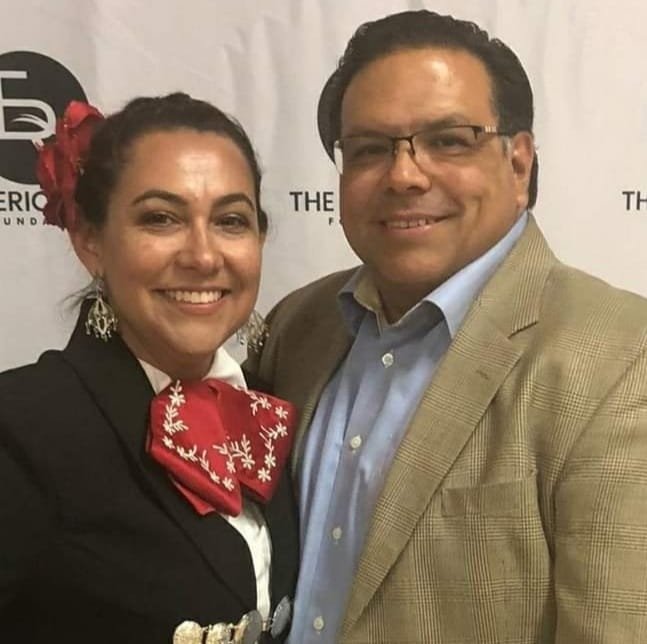December 23 Arts and Entertainment Source: Definitely Feliz Navidad for first-time author – Vallejo Times-Herald
Trending:
Arcadia Publishing’s Images of America paperbacks lists several books about Vallejo: The history of the city by Jim Kern, Filipinos of Vallejo by Mel Orpilla, Jewish Community of Solano County by Rachel Raskin-Zrihen, Rachel Rae Moncharsh-Lessem and Shoshana Deutscher-Nurik.
Marisela Barbosa-Cortez noticed a void in the Arcadia lineup.
“We didn’t have one for the Latino/Hispanic community,” she said. “I thought it would be something nice to have.”
Barbosa-Cortez laughed.
“I never thought it would be me to write it,” she said.
But she did. “Latinos & Hispanics of Vallejo” hits the shelves Jan. 10, with a book-signing Jan. 15 at the Vallejo Naval and Historical Museum.
Though it was a conversation with Orpilla 10 years ago that inspired Barbosa-Cortez, it took the impact of COVID-19 to push her to the computer keyboard.
“I kept seeing more about Latinos in our community and challenges and had flashbacks about (writing) the book,” Barbosa-Cortez said. “I couldn’t believe nobody had taken on that opportunity.”
Though Barbosa-Cortez had never done a book, “I love history,” she said.
Arcadia set a few parameters — including a 127-page limit — and Kern offered the archives of the Vallejo Naval and Historical Museum for research.
She sought input from others, who led her to valued sources.
“They would say, ‘You need to go talk to so-and-so,” said Barbosa-Cortez.
One of the pleasant surprises, she continued, was the Vallejo history of the Blanco family, starting with Frank Blanco (1854-1925). His son, Edwin, (1887-1956) was the first Latino elected public official in the city “and had done a lot of things for Vallejo.”
Barbosa-Cortez met members of the Blanco family still in Vallejo, who let her borrow the family album.
“It was very exciting to know that there are still (Blanco) family members that can share their stories,” Barbosa-Cortez said.
Though there were frustrations in creating the Latinos & Hispanics of Vallejo paperback, one of the joys, the author said, “was connecting with the community” and learning about all the relevant organizations.
“You don’t hear about things we were doing,” Barbosa-Cortez said. “We were here doing things, impacting the community.”
She learned about Latinos and Hispanics helping new immigrants who didn’t speak English back to the 1970s and participating in July 4 parades, “collaborating to make things better,” Barbosa-Cortez said.
One worthy nugget from Kern to the author: “At one point, you have to stop and focus on the story.”
“There’s so much information in gathering history,” Barbosa-Cortez said. “How do you put everything in there?”
“It takes someone with the right combination of time, enthusiasm, and knowledge of the subject. I’m glad Marisela felt that she had all three,” Kern said, offering his “do’s and don’ts.”
The main “do” is to try to get as much information as possible into Arcadia’s very specific format,” Kern said. “Don’t waste words in writing the captions. For example, I’ve seen several Arcadia books where the author says ‘This photograph shows …’ That’s three wasted words.”
Another “do” is to “try to always verify your information with more than one source,” Kern added. “And another ‘don’t’ is don’t worry if there are a few mistakes. It’s unfortunate but it happens to everyone.”
“I wanted to tell the story,” Barbosa-Cortez said. “So you might see more than one picture of a person because it’s not just the one picture that’s going to tell the story. There’s so much history to tell. The No. 1 challenge is to stop gathering information. Everyone has a story, though some can tell it better than others.”
It was undeniably difficult to omit a basketful of history, she said.
“I wish I could incorporate everything,” Barbosa-Cortez said, with one ultimate goal of “wanting the Latino/Hispanic/Latinx community to know there’s opportunity for everybody.”
“Latinos and Hispanics of Vallejo” was sent to the printer less than two weeks ago.
“I still don’t have a hard copy,” Barbosa-Cortez said.
Though it’s the middle of winter, there are plenty of butterflies, she said.
“I’m a little nervous to see how the community will react to it,” Barbosa-Cortez said. “So far from posts on Facebook, everyone’s excited. I hope this is the beginning and inspires others in the community to write a book.”
“Latinos and Hispanics in Vallejo” will be available at the Vallejo Naval and Historical Museum, 734 Marin St., after Jan. 10, with a Jan. 15, 1 p.m. book-signing at the museum.
Sign up for email newsletters




